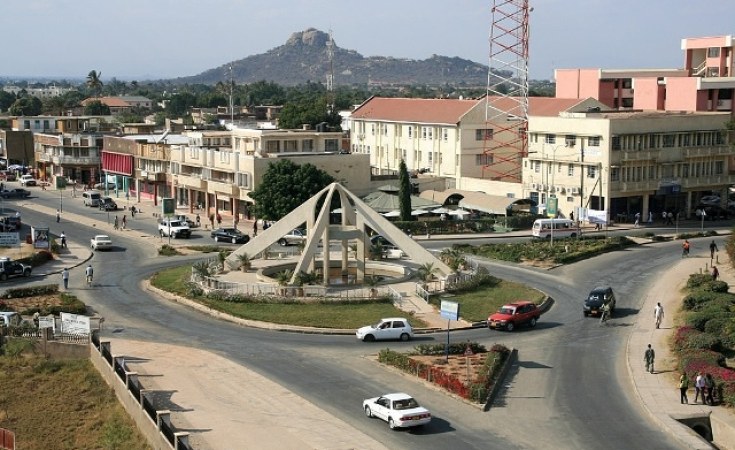Relocating a nation’s capital is no small feat. It’s a decision that requires meticulous planning, vast resources, and a vision for the future. Countries might opt for such a significant move for various reasons, from geographical to political to economic and strategic considerations.
In 1973, The first president of Tanzania, Julius Kambarage Nyerere, announced the planned move from Dar es Salaam to Dodoma. A state agency and ministry were established to oversee the plan’s implementation. It was decided that Dar es Salaam would continue to serve as the nation’s principal port and commercial capital. This choice posed a difficult development challenge. Government services and resources had to be relocated, and infrastructure built.
A comprehensive array of administrative functions were needed in Dodoma. Initially projected to be a decade-long endeavor, the move was rooted in a vision that transcended the immediate financial implications. By 1996, marking a significant milestone, Tanzania’s Parliament had already established its base in Dodoma. Over the years, many government offices transitioned to the new capital, even though Dar es Salaam retained its status as the commercial heart of the nation.
The momentum of this transition was further accelerated under the leadership of the late President John Magufuli. In 2015, he mandated the relocation of the remaining government offices to Dodoma. By October 2019, Magufuli himself had moved his residence to the city. Although his untimely demise slowed the process, the current projection, backed by a request from Prime Minister Mr. Kassim Majaliwa, is that all government institutions will be based in Dodoma.
The objectives behind this monumental move were multifaceted. It was seen as a strategy to prioritize rural development, harness local resources, and promote social and economic equality. Additionally, the move aimed at consolidating control over vital economic activities, fostering democracy, enhancing freedom of speech, and curbing elitism and excessive bureaucracy. The relocation also spurred the growth of Dodoma, leading to the establishment of educational institutions and the development of new city campuses.
However, the journey was not without its challenges. For years, the complete transition was impeded by infrastructural inadequacies, housing shortages, and fluctuating political will. Yet, the perseverance paid off. Today, Dodoma flaunts modern infrastructure, from revamped airports and bus terminals to improved roads and sports facilities. The city has also witnessed the rise of new schools, universities, residential buildings, and shopping centers. While the influx of large-scale investors has posed challenges for local businesses and led to a surge in housing and food prices, the overall sentiment remains positive. The city’s transformation has been largely beneficial for its inhabitants.
Why was the Relocation Necessary?
The reasons are complex. The following are some of the most critical factors that informed the decision:
- Overcrowding and strain on infrastructure; Dar es Salaam has a population of 5,383,728 people and suffers from overcrowding and infrastructural stress. I was moving the capital to redistribute some of the population and ease pressure on resources and public services in Dar es Salaam. The population growth rate in the Dar es Salaam region decreased from 5.6% in 2012 to 2.1% in 2022.
- Uneven development; Tanzania’s development was heavily concentrated in Dar es Salaam and other coastal regions—the move aimed to stimulate economic activity in previously neglected areas.
- Accessibility and national unity; By relocating the capital to a more central location, the government aimed to make it more accessible and foster national unity and inclusiveness.
- The efficiency of government operations was to reduce travel costs and time between Dar es Salaam and other parts of the country for government officials.
As Tanzania nears the completion of this relocation, it prepares to join the ranks of countries like Nigeria, Brazil, and Pakistan, which have successfully shifted their capitals in recent times. The journey, initiated by the vision of Julius Nyerere in 1973 and carried forward by leaders like Magufuli, is a testament to Tanzania’s resilience and ambition. As Dodoma blossoms into a fully realized capital city, the nation stands poised to reap the long-term benefits of this historic move.
What Can Tanzania Learn From Other African Countries?
Nigeria’s change of capital from Lagos to Abuja in the 1990s can provide insights into the planning and execution of such a relocation. Abuja was a purpose-built city. Key takeaways include involving stakeholders in planning, ensuring adequate infrastructure development, and promoting the new capital as a business hub to attract investment.
Proper planning and financial management are crucial. The relocation process can be costly, as seen in Nigeria. Tanzania should budget carefully for the move while ensuring transparency and accountability in financial management. The country can also learn from South Africa’s approach to developing more than one city as a capital. Tanzania should continue to invest in the development of Dar es Salaam as an economic hub and maximize its growth potential. Considering these lessons, Tanzania can ensure a successful transition and promote long-term growth and development in Dodoma and the country.

